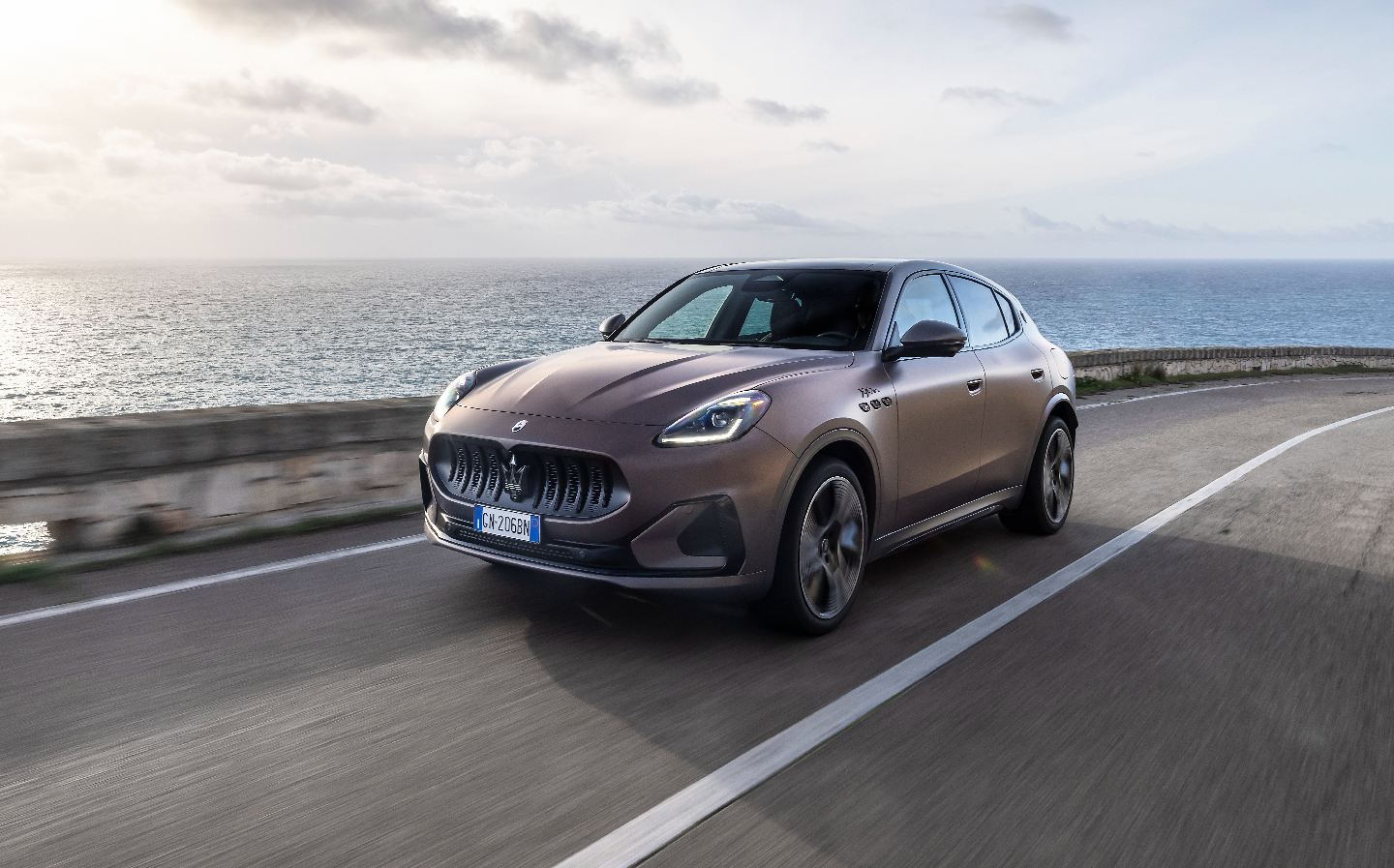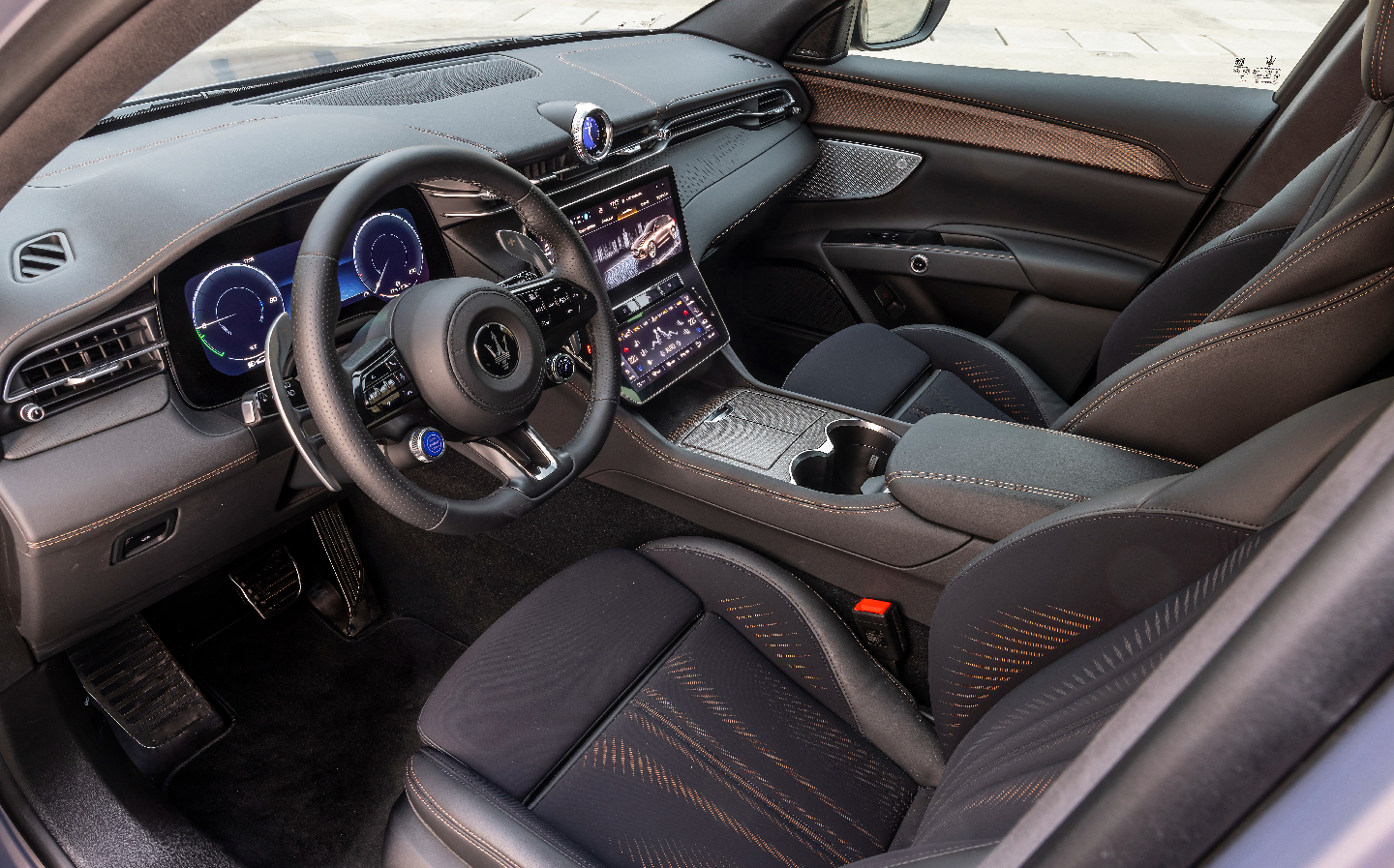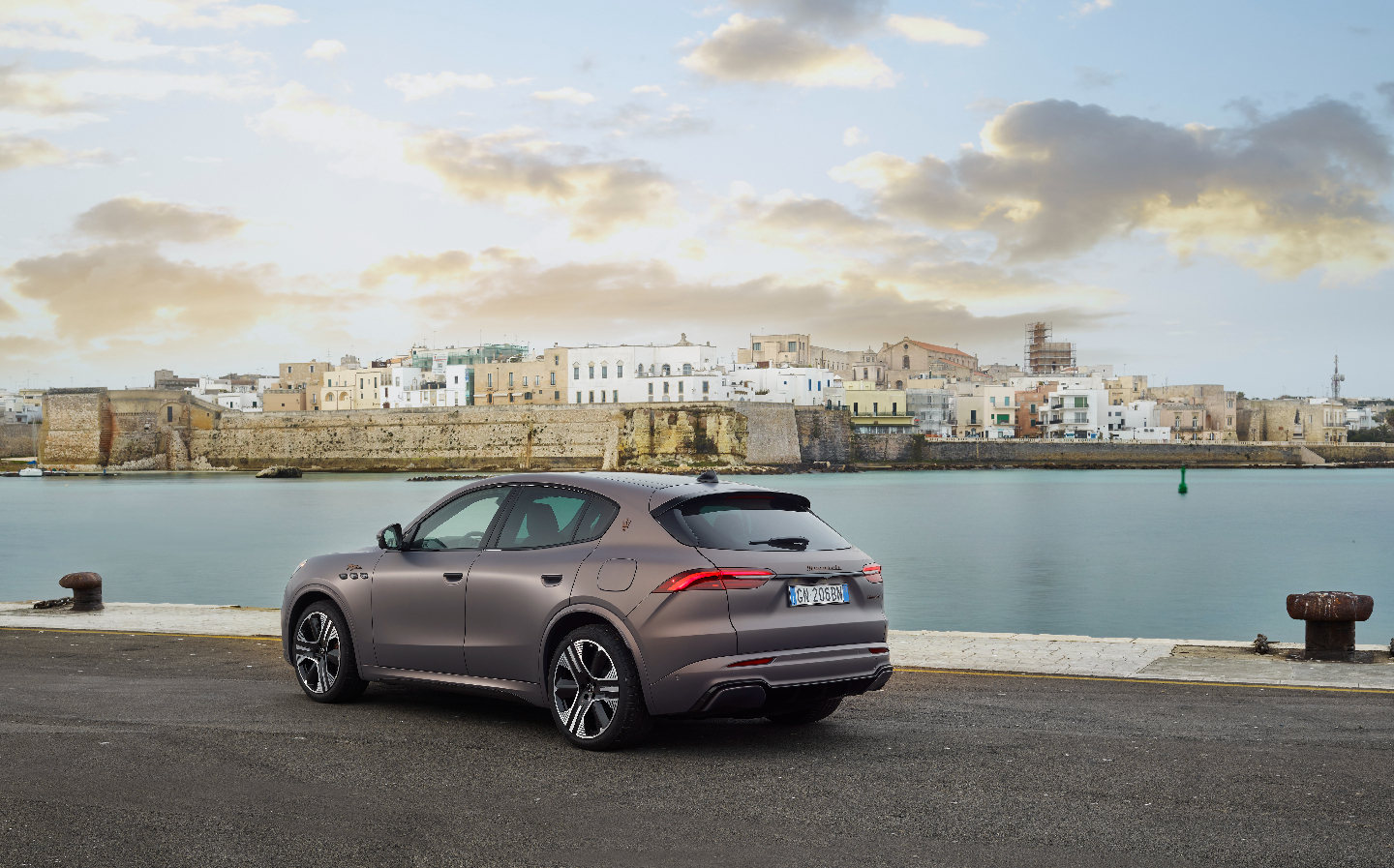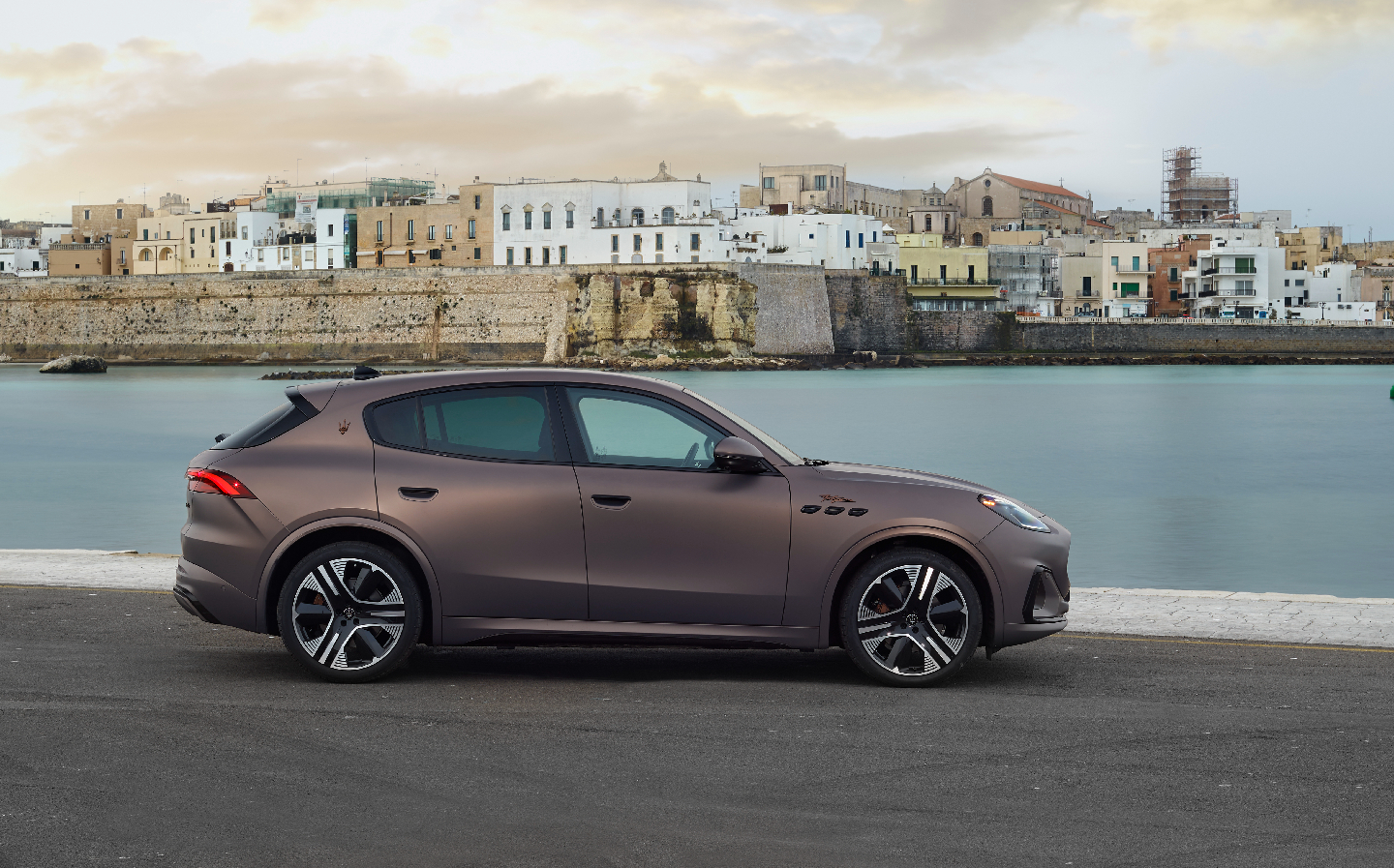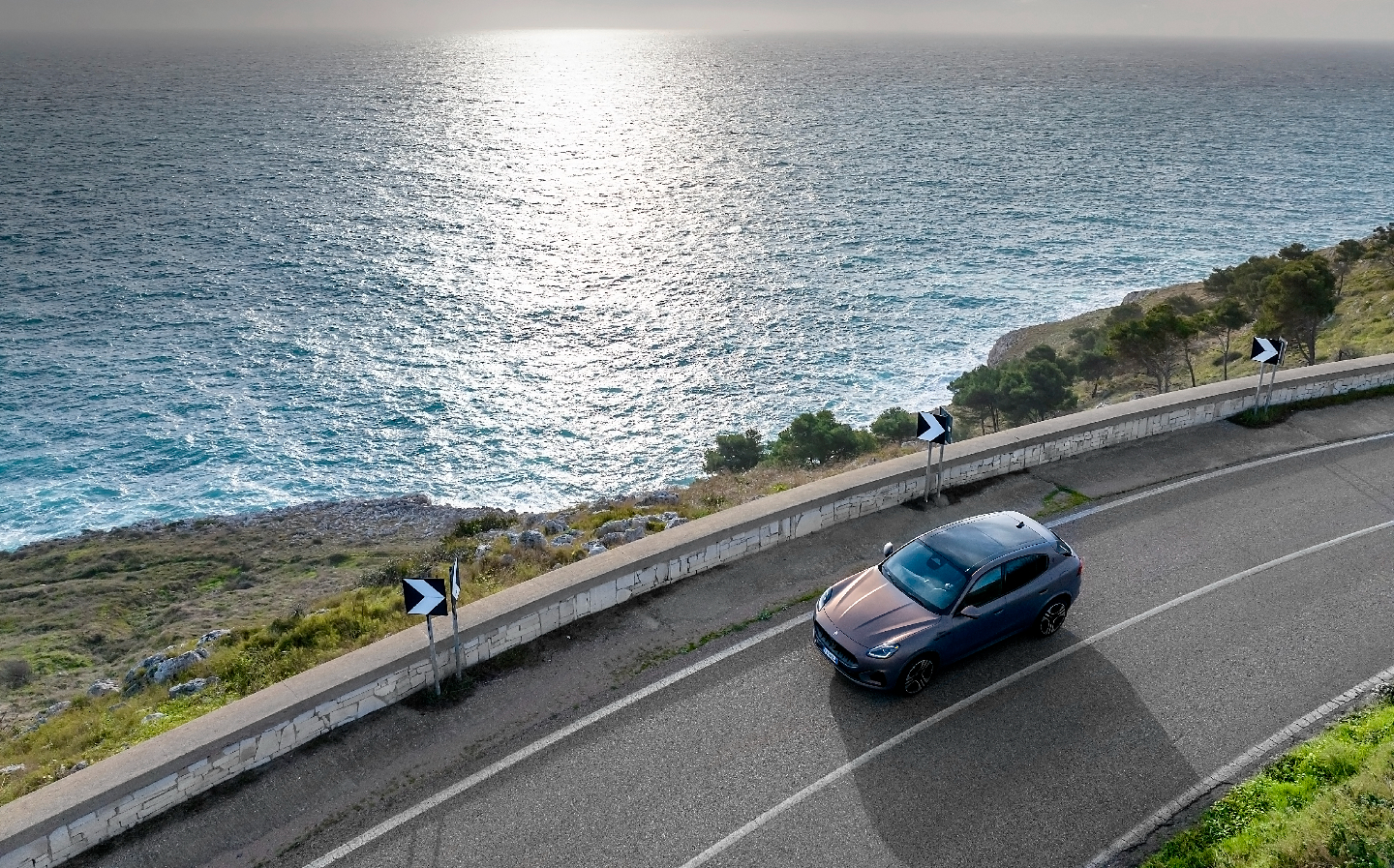Maserati Grecale Folgore 2024 review: Trident brand’s first electric SUV is good … but will it worry Porsche?
Not quite the full monty
When you think of Maserati, what pops into your head? Beauty, probably. Performance, certainly. Luxury, yes. And, for those familiar with the Italian brand, noise. In the past, Maserati has been almost as obsessed with the sound made by its cars as anything else. Which causes an obvious problem as the world shifts to battery-powered cars; is an electric — and therefore near-silent — Maserati still a Maserati?
The Grecale is the second of the Trident-badged cars to go fully electric, after the GranTurismo. A droptop (GranCabrio) version of that car is also on the way but the big SUV will be in showrooms first, and is the more important one for Maserati — SUVs are more likely to sell well, and with greater profit margins. The success (or not) of the Grecale Folgore will be a major determining factor for the carmaker’s health after 2035, when the ban on sales of new petrol and diesel cars comes in across Europe, and the petrol versions of the Grecale (there’s a mild hybrid and a V6-powered version of the latest model already on the market) are no longer in showrooms.
With prices starting at just under £110,000, there won’t need to be huge numbers of sales, and it’s likely that many people after a posh, fast electric SUV will turn instead to the Porsche Macan Electric, as that costs from under £70,000. But Maserati has always offered something different from the German alternatives. A Maserati spokesperson told me he has no idea how many sales there will be; it’s finger in the air time. All they can guess is that countries like Italy and America will remain petrol-focused, but Scandinavians will probably skew towards plug power. Britain? They haven’t the foggiest.
The good news — for Maserati and customers — is that the Grecale Folgore a cracking looking car, as SUVs go. Its exterior design is based on the sporty Trofeo version but marks itself out from its petrol siblings with a revised grille (less cooling is needed, though there’s still a significant amount of air allowed through to cool the motors and battery) and gloss black elements, as well as illuminated side vents, and badges and brake callipers finished in copper — or “rame”, in Italian.
This latter hue, Rame Folgore, is exclusive to the electric models and is inspired by the facade of the Guggenheim museum in Bilbao, Maserati says, where “where warm copper hues in the sections in the sun co-exist with cooler shades of bluish grey in the areas in the shade.” (This is one of the least pretentious parts of the press pack, by the way; never change, Italy.) It comes at a price, though — final UK costs are TBC at the time of writing but in Europe, a paint upgrade will set you back around 15,000 Euros (£12,833). Ouch.
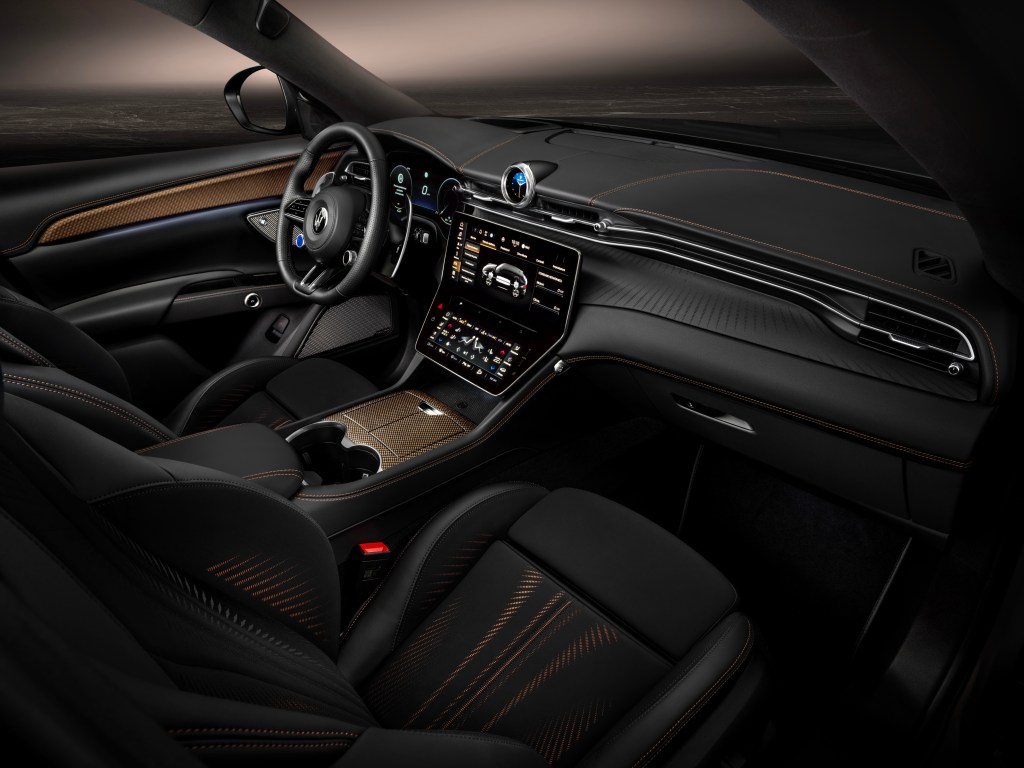
Inside, Maserati has been keen to use more sustainable materials for the Grecale Folgore, including a type of nylon called Econyl that is recycled from discarded carpets, fabric scraps and plastics recovered from oceans. In the UK, leather is standard but this eco-friendly alternative, which covered the seats of our test car, is a no-cost option. It proved grippy, comfortable and unlikely to moisten your back and buttocks in hot weather. Which is good. Whether it will feel premium enough for luxury car buyers is another question.
Regardless of the trim choices, the cabin of the Grecale is very pleasant. The characteristically dark dashboard can be offset with a few choice contrasting colours for the seats, with red or white elements as desired.
In the centre is a decently-large touchscreen, running a nicely-designed operating system that responds quickly to the touch. It’ll run Android Auto and Apple CarPlay, of course, plus — and this is something I haven’t been alerted to on any car before — a Chinese equivalent, which rather gives away where Maserati’s sales aspirations really lie.
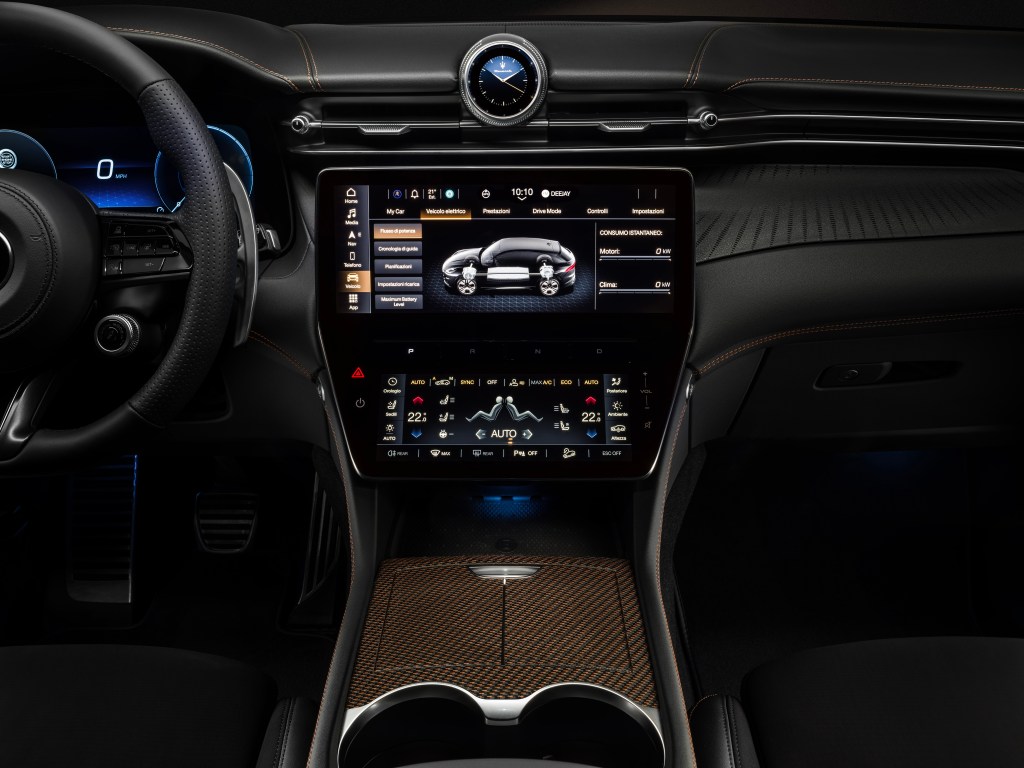
Below that is another touchscreen for the climate and a few other crucial functions, such as setting the ride height, and that also works well and is logically laid-out.
But Maserati hasn’t eschewed physical buttons completely, and in fact the steering wheel is awash with them. Every function of the cruise control system can be found there, with separate buttons even for the standard cruise, assisted cruise and speed limiter — often these’ll be combined into the same button (multiple presses for the desired mode), onto a stalk.
And that’s only one side — the other is devoted to the infotainment system controls. My co-driver commented that there were too many, and they’re not of high enough quality, but I found them solid and reckon Maserati deserves a pat on the back for resisting haptic buttons or putting everything on the touchscreens. Certainly it should appeal to Maserati’s more seasoned customers.
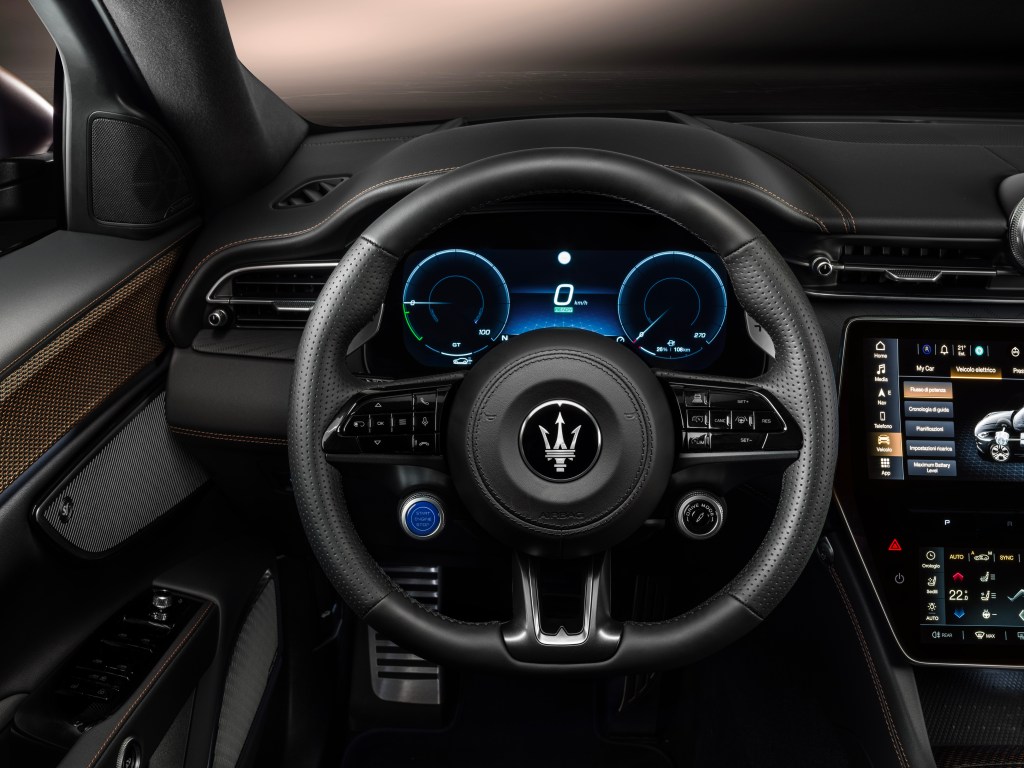
In front of the driver is another digital screen, and on Folgore models in the UK there will be a head-up display, which projects driving info onto the windscreen, though our Euro-spec version didn’t have this feature installed.
Maserati has also managed to get a decent amount of space out of the interior of the Folgore, with decent headroom and legroom up front and plenty of space for those in the back, too, though the panoramic sunroof option does make the roof lining thicker and so eats into vertical space. One engineer also let slip that it adds 40kg to the weight of the car, and so affects efficiency slightly. It does let a lot of light into the cabin, though, and looks upmarket, so… swings and roundabouts.
Space is also good in the boot — 535 litres, which is 15 litres more than the Mercedes EQE SUV. It’s practical, too, with the ability to drop the rear seatbacks with the pull of a handle.
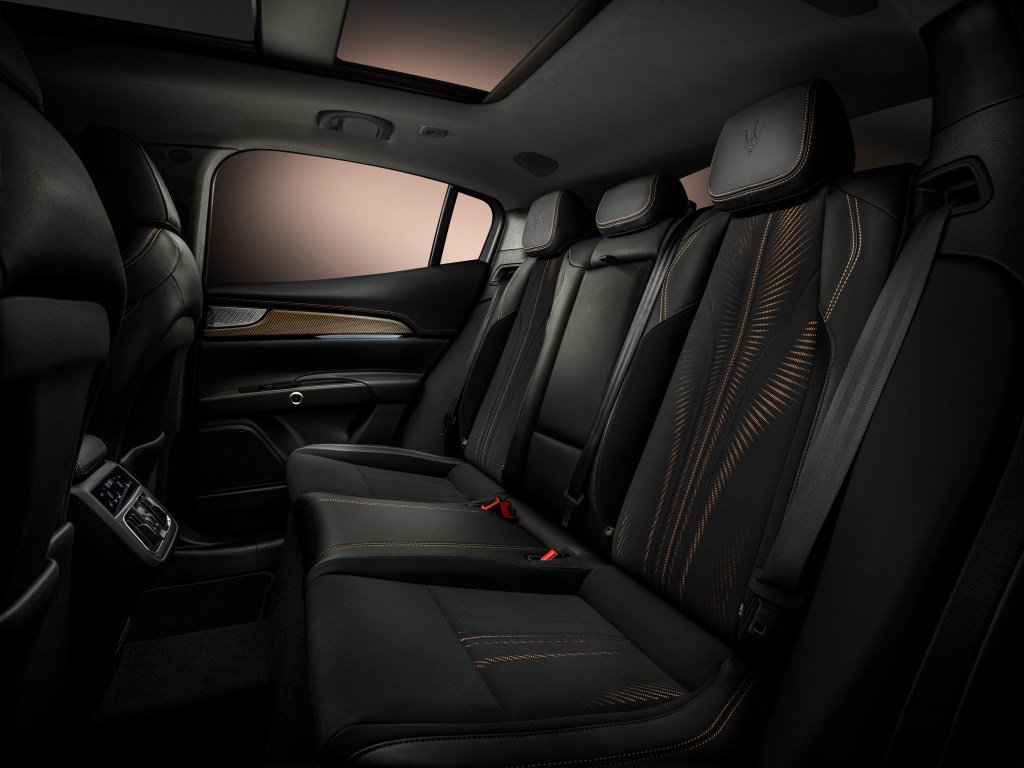
But enough of all that; the most important part of a Maserati is how it drives. Start it up and no, you don’t get the trademark growl, followed by a deep-throated gurgling. The only way you know it’s switched on is via a short electronic burble, along with the various screens coming alive. Drive is selected by one of the large buttons on the centre console, with separate ones for Neutral, Reverse and Park — no slidey touchscreen nonsense here.
On the move, though, there is a synthetic noise akin to an engine sound, produced via the car’s soundsystem speakers, though it’s the least annoying fake engine we’ve yet experienced, and while the advice is usually to turn it off, we’d be happy to leave Maserati’s sound running. There’s an external noise, too, with two speakers positioned under the car where the tailpipes would be, but we didn’t hear it during our test, even when manoeuvring the cars, which is good news. The loud rumble from the Abarth 500e is beyond ridiculous.

Power and performance are most definitely not an issue. Pulsing through the four wheels, via twin electric motors, is 550bhp and — more usefully for getting the Grecale Folgore’s 2.5-ton heft away from the lights — 605 lb ft of torque (twisting force). That translates to a seriously perky 0-62mph times of 4.1sec, which matches the V6-powered Porsche Panamera S and even the electric Audi e-tron GT, which you’d have thought would have a big SUV licked in acceleration terms.
The ride quality complements the speed potential. It’s definitely on the firm side in Sport mode, and on motorways with dual carriageways with poor surfaces it’s not ideal. But drop it into GT or max range modes and on those roads it’s decent. It doesn’t iron out all the divots and pockmarks as a Mercedes might, but this is a performance SUV and in most situations, more than acceptable. Perhaps the 20in wheels would be preferable over the largest 21s on offer, which were fitted to the test cars, due to the deeper tyre sidewalls.
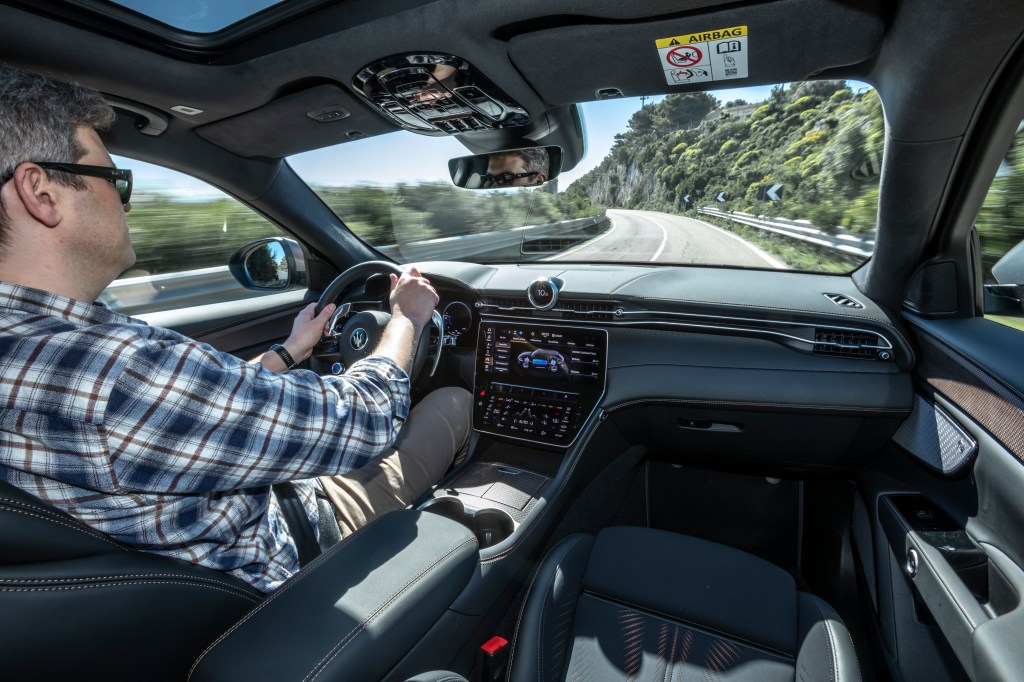
There is a way to make the ride much silkier, and that’s to put the car into Off Road mode, which lifts up the chassis and adjusts the air springs to a more forgiving setting, though this only works up to a certain speed — out on the highways and A-roads the Grecale Folgore will revert to the GT settings. We had a quick go on some dirt tracks and through mud splashes (anything more hardcore than that isn’t really Maserati territory), and it felt both capable and comfortable.
Back on the blacktop and the Grecale Folgore proves keen and able through the corners, especially in Sport mode, and you quickly fall into a rhythm on sweeping coastal roads. The brakes are strong, with the large paddles behind the wheel allowing you to adjust energy recuperation strength as required. Maserati claims there’s a one pedal mode, though it’s not as strong as it ought to be and you will still need to use the brake pedal from time to time.
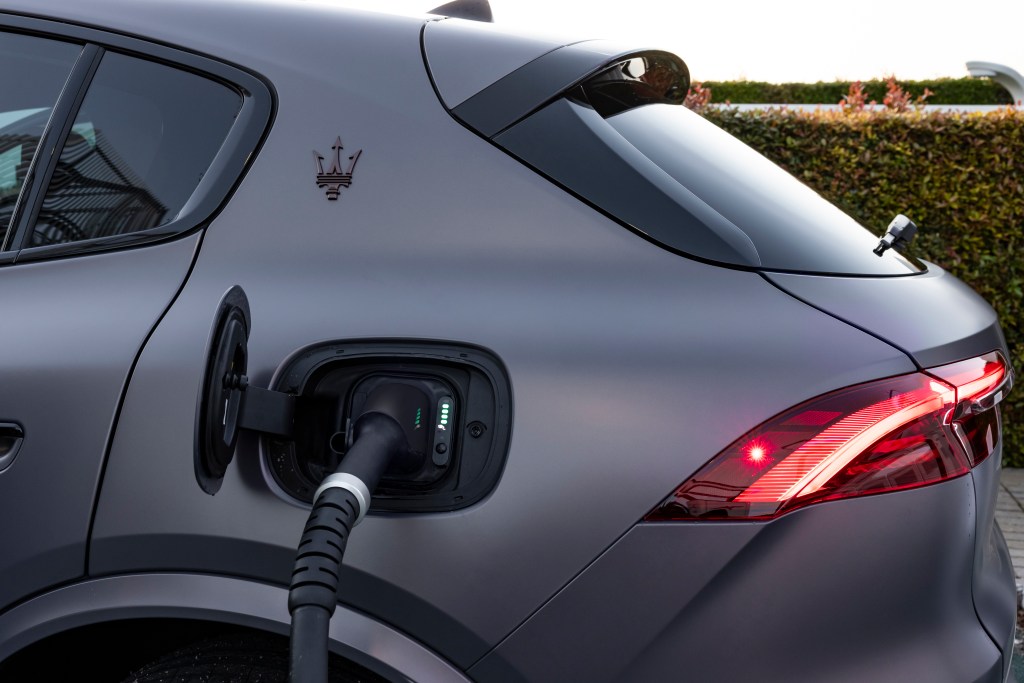
Maserati’s official range figure for the Grecale Folgore is up to 317 miles on a mix of roads, but as with all electric cars that’s likely to be less in the UK, where temperatures are mostly below the 23 degrees C of the official WLTP test. On our test in southern Italy, after 58 miles we’d used 25 per cent of the battery, which suggests a real world range of just 232 miles, but we were pushing on fairly swiftly. As a guide, we’d suggest 260 miles is what most customers could expect to achieve, though how and where you drive can affect things significantly.
When you do need to charge, the maximum speed is decent but not sensational. The 400v electrical system will charge at a maximum of 150kW, which means a rapid charge at a DC public charger from 20 to 80 per cent full in 29 minutes. By contrast, the Porsche Macan 4 Electric can charge at 270kW and so can get from 10 to 80 per cent in 21 minutes.
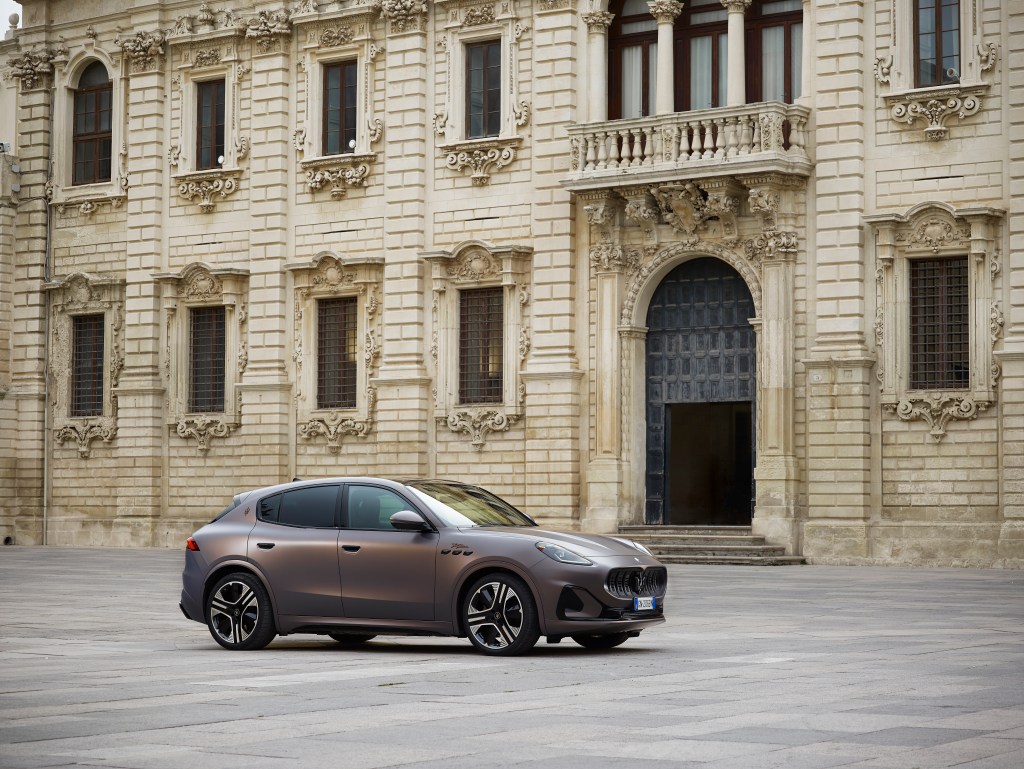
This might make you think you’re getting less for more with the Grecale Folgore, but while your head might say buy German, after a drive of the Maserati your heart might still be saying go Italian. And then, when you’re in the showroom and hear the throaty V6 version, you might have your head turned again.
Related articles
- If you enjoyed this review of the new Maserati Grecale Folgore, you might like to check out our Audi Q8 e-tron review 2023
- Also take a look at the new Maserati GranCabrio convertible GT car with 542bhp V6
- And don’t miss our Maserati GranTurismo 2023 review, including the electric Folgore version
Latest articles
- Aston Martin Valkyrie AMR-LMH hypercar hits track ahead of 2025 Le Mans challenge
- Porsche has begun testing the electric Cayenne
- Cupra Leon 272 eHybrid 2024 review: Bigger battery, better tech … but is it a Cupra?
- Porsche 911 GTS 2024 review: Hybrid heresy or more Stuttgart genius?
- Extended test: 2023 Vauxhall Astra Sports Tourer GS PHEV
- Ford Capri revival has faced a lot of flak… but are buyers put off? Here’s what visitors to the Festival of Speed had to say
- F1 2024 calendar and race reports: What time the next grand prix starts and what happened in the previous rounds
- ‘No timeframe’ for how long Volvo’s returning estate cars will be on sale in UK
- Kia Picanto 2024 review: Updates add spice to cute Korean city car


